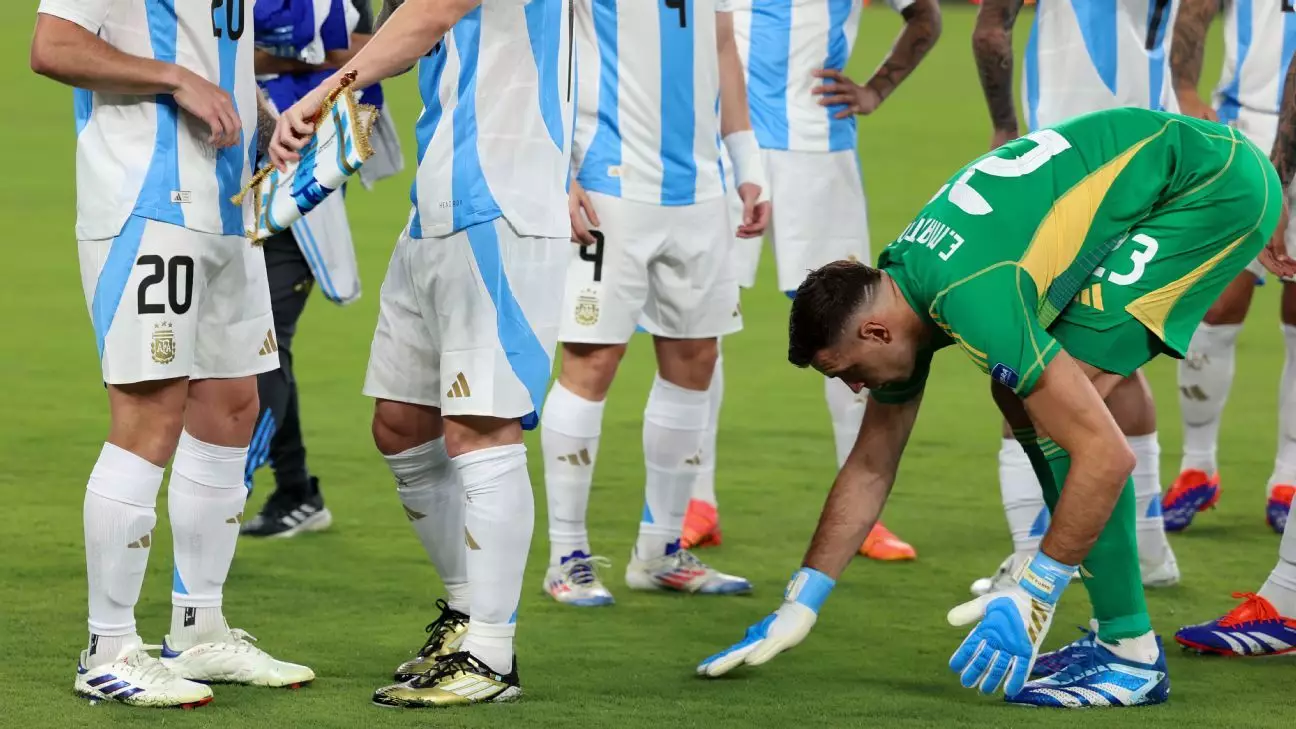In recent history, soccer fans have looked forward to the United States playing host to major tournaments, anticipating world-class competition and unforgettable matches. However, last summer’s Copa América, a prestigious showcase of the best teams from the Americas, instead painted a troubling picture. The event, intended as a precursor to the monumental 2026 FIFA World Cup—set to unfold in conjunction with Canada and Mexico—was marred by incessant concerns over pitch quality across the country. As players vocally expressed their discontent, the focus has now turned to an even bigger event: the upcoming Club World Cup, which is not only a showcase of elite teams but also a litmus test for the U.S.’s preparedness for the World Cup.
A Host of Challenges
This year, the Club World Cup, featuring 32 teams for the first time, is scheduled to take place in prominent NFL stadiums across the United States, all ready to welcome football superstars like Kylian Mbappé and Erling Haaland. However, the very venues that are meant to elevate the experience are primarily designed for American football, complete with artificial turf that presents significant challenges for soccer players. In a pre-World Cup scenario, the U.S. must now confront the problematic legacy of Copa América’s pitch conditions and the complaints that plagued the event.
The five key stadiums earmarked for both the Club World Cup and the World Cup—including Atlanta’s Mercedes-Benz Stadium and Miami’s Hard Rock Stadium—underscore the dilemma. These are arenas mainly built with synthetic surfaces in mind, creating an uphill battle in the transition back to natural grass. Players had openly criticized the temporary grass overlays used during the Copa América, describing them as hazardous and unreliable, with many voicing their frustrations about uneven, bumpy surfaces that interfered with their performance on the field.
The FIFA Response: A New Era of Pitch Strategy
In light of the backlash from players and coaches during the Copa América, FIFA has taken a more proactive approach for the upcoming tournaments. Traditionally, World Cup tournaments have relied on natural grass pitches, but the challenge of converting NFL stadiums has necessitated innovative solutions that resonate with the nuances of a soccer game. This time, FIFA is keen to avoid mistakes of the past and is testing remarkable advances in pitch technology.
FIFA’s senior pitch manager, Alan Ferguson, acknowledges the unique hurdles presented by the 2025 Club World Cup and the subsequent World Cup. His team is dedicated to crafting solutions that not only accommodate the scale of these tournaments but also cater to the distinct requirements of soccer. The methodology being adopted eschews temporary overlays entirely; instead, FIFA plans to install pitches well in advance of match day, ensuring optimum conditions for players.
Using hybrid technology that incorporates both natural and artificial grass, FIFA aims to create surfaces that feel like traditional grass but can withstand the rigors of an extended tournament. These “shallow pitches” promise a more stable, reliable option that prioritizes player safety and performance, catering specifically to the dynamic nature of soccer.
Anticipation Meets Skepticism
Ahead of the Club World Cup, there is an air of skepticism regarding whether these strategies will hold up under the intense scrutiny of a major competitive environment. Players have expressed mixed feelings about these new surfaces, indicating that while some adaptations seemed promising, they also required significant acclimatization. There are legitimate concerns about how these fields will hold up, not just during friendly matches but crucial contests where world-class talent competes at peak performance levels.
Ferguson’s team embraced an experimental approach during recent Nations League matches to gauge players’ reactions to the new surfaces. While some progress reports have been positive, from “slick” surfaces to more traditional grass sensations, the true test will be when these pitches are subjected to the pressures of the Club World Cup and World Cup matches.
Implications for Major League Soccer
The stakes extend beyond the immediate challenge of ensuring playable pitches. The Club World Cup represents a significant opportunity for Major League Soccer (MLS), where teams like Inter Miami will be under pressure to perform. Former players like Shaka Hislop have vocalized the pressing need for MLS teams to deliver standout performances, lest they risk being considered underwhelming on an international stage. The eyes of the soccer world will be keenly watching how these clubs adapt to the challenges posed by the venues, which will inevitably affect perceptions of the league’s credibility.
As this unprecedented cycle of club and international competition approaches, there is an understanding that FIFA, MLS, and participating teams must overcome both logistical and perception-related hurdles. The ambition to create reliable, high-quality playing surfaces represents more than just aesthetic concerns; it is a foundational requirement for ensuring that the beautiful game is honored in the spirit of fairness, skill, and sportsmanship that fans worldwide anticipate. The endeavor ahead is monumental, yet it also presents an inspiring moment for the evolution of soccer in North America.

